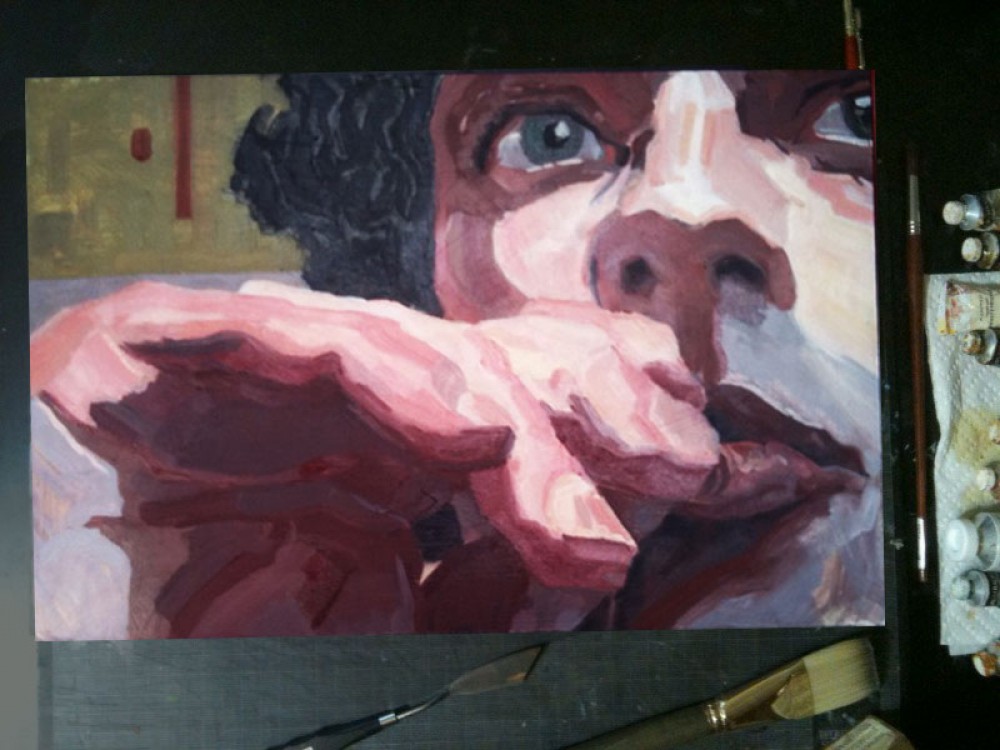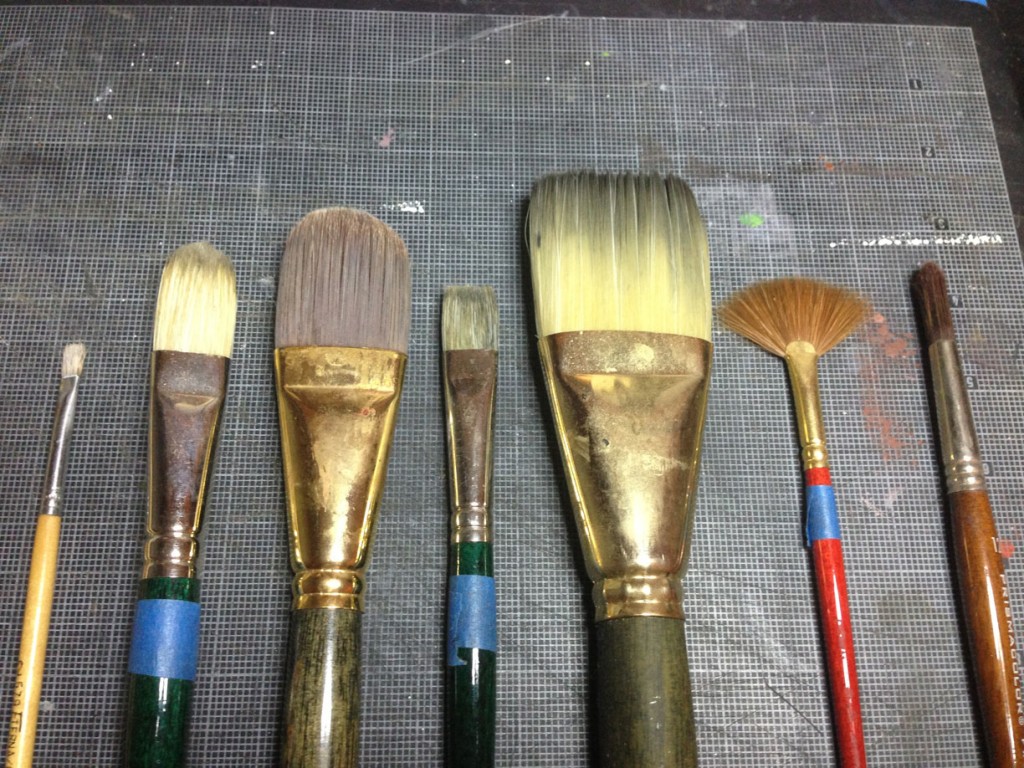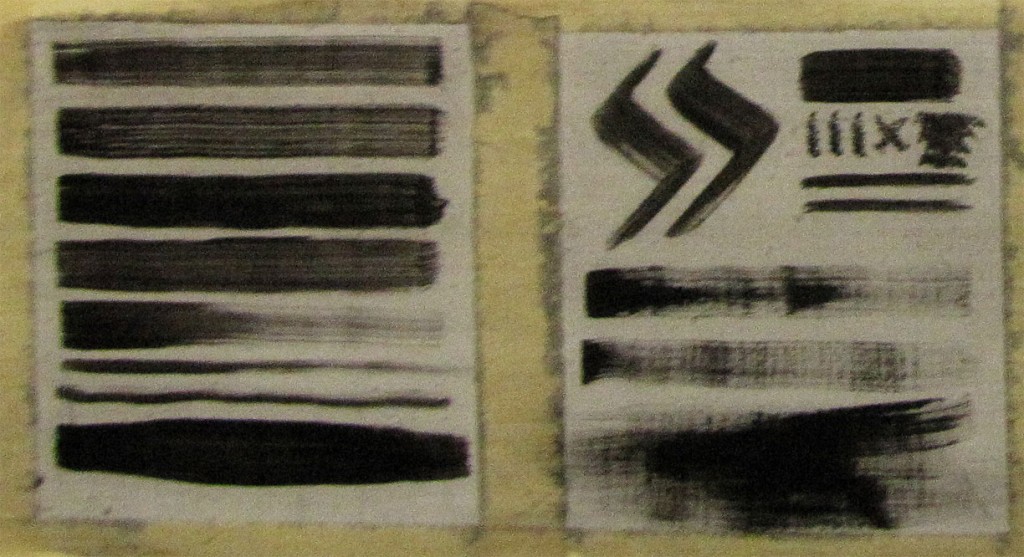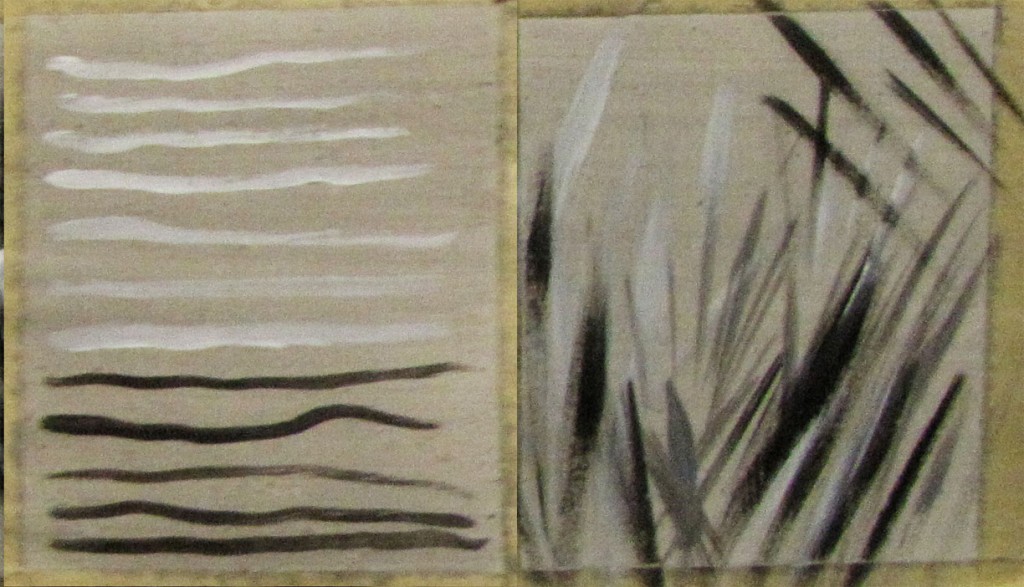This webpage is a supplement to the supply list for Oil Portraiture, a class I am offering through UT. You can download the full list, or register for the class here.
Painting supplies can be a little intimidating. Brushes are perhaps the most confusing. To help, here are some basics. To demonstrate, here is a photo of a few of my brushes…
Look at those handsome devils.
So first of all, let’s talk about what they are made of. The five guys on the right are bristle brushes. They are hard and coarse, and generally made of hog hair. They are great for texture, as they leave deep channels in the paint. They are also inexpensive, and can take quite a beating.
Notice the shape of these brushes. Flats are sharp cornered, squared brushes. A brush stroke made with a flat will have a sharp, hard edge. Brights are the shorter cousin of flats, and therefore have a little more spring. If counting from left to right, 1, 4, and 5 are flats, with 4 being a flat/ bright. With brights, you can really use the tops and sides to make very sharp strokes.
A filbert, on the other hand, doesn’t have an abrupt beginning, and therefore is a little more natural. Again, from left to right, 2 and 3 are filberts.
Sometimes, it’s not ideal to see every groove left by each hair of the brush. In that case, there are softer oil synthetics, like the white nylon brushes, or natural sables, like Kolinsky Red Sables. They are more expensive, but beautiful, and will last a long time if well cared for.
There are also round brushes, for a completely different line character, and for a very natural shape.
Fan brushes, like number 6 above, are specifically for blending wet paints together.
If you have any questions, we just need the little bristle, 1 on the left, for the first class. That flat is about 1/4″, under a dollar, and we’ll get going from there.
Google+



